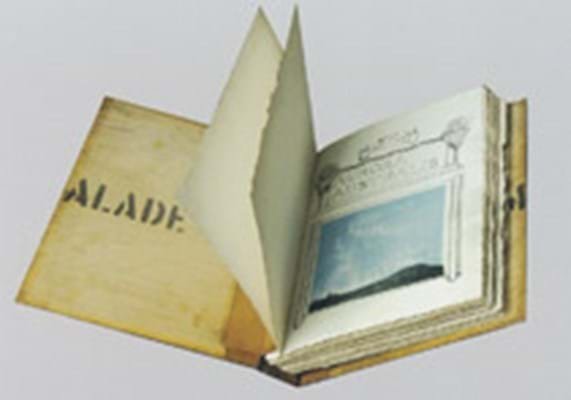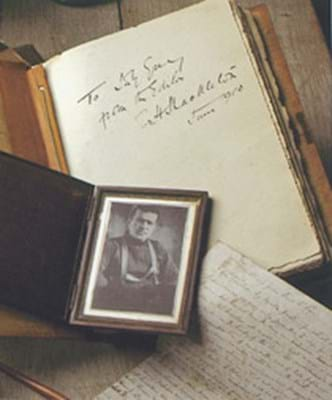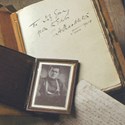Determined to keep his men occupied during the long polar night, he was already planning what has become the most famous and costly of Antarctic books, Aurora Australis. Despite their inexperience and the cramped and difficult conditions of the hut on Ross Island, where ink quickly froze, the ship's fledgling printers managed to produce a very impressive work during the winter months of 1908.
To editorial contributions by Shackleton and others were added lithographs and etchings by the expedition artist, George Marsden. The expedition's motor mechanic, Bernard Day, improvised bindings using Venesta board packing cases and old strips of harness leather and seal skin.
These bindings, an early form of plywood, often reveal their original contents - marmalade in the case of a copy offered by Anderson & Garland of Newcastle on March 22.
One hundred copies of Aurora Australis were completed "At the Sign of the Penguins", of which between 60 and 70 seem to have survived. The Newcastle copy was found in a garage within ten miles of the saleroom, but had once been inscribed and presented by Shackleton to Viscountess Grey.
Sixteen copies have been sold in the past 20 years and results indicate that the £10,000-18,000 estimate was always going to be too little. With several telephone lines in action, bidding quickly passed that level and at the last moment a local collector of polar material stepped in to secure this copy for a record £46,000 (plus 15 per cent premium).
The previous high was £42,000, seen at Bloomsbury Auctions in 2000, but Christie's, who have sold more copies than anyone else, will be hoping to do as well with a copy they are to offer in their September polar sale.
At the sign of the penguins – £46,000
Before embarking on his 1907-09 expedition to the Antarctic, Ernest Shackleton sent Ernest Joyce and Frank Wild on a crash course in printing and had a press and associated materials loaded onto the Nimrod.








